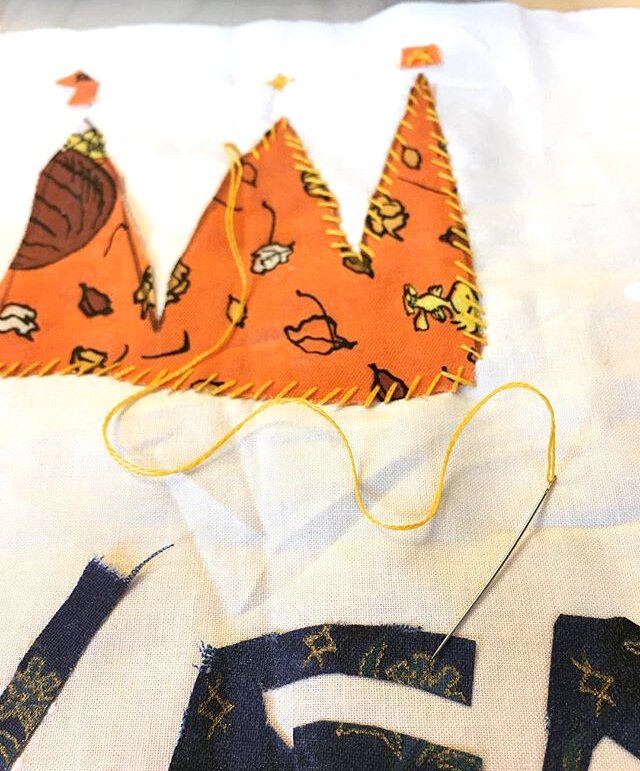Learn More about the Community Quilt Project

Step 1 - Raw Blocks.Participants are invited to design and create quilt blocks expressing their passion, pride, concern, anger or sadness regarding social justice issues they care about. Through one- on-one and group discussion, topics are selected and design decisions are made. Using a scale drawing of their message, an individual raw-edge appliqued block is created using fabric and fabric glue.

Step 2 - Embroidering the Message The quilt blocks are then sent to a community of embroidery volunteers around the world. Once they receive the blocks, each volunteer embellishes and embroiders them, following the young artists’ design requests while also adding their own personal style, to amplify the messages conveyed on the blocks.

Step 3 - Piecing the Quilt Top Once the blocks have been embroidered, embellished and mailed back, the blocks enter the hands of another community of volunteers who sew the blocks together to create a quilt top. Once it is pieced, the quilt top is layered on top of batting and then a backing fabric, creating the “quilt sandwich”.

Step 4 - Longarm Quilting. SJSA's longarmers take the quilt sandwich and mount it on a large machine frame for the final quilting step. The longarm quilting machine sews through all of the layers, permanently joining them and providing an overall stitched secondary design to the quilt. Once this is complete, the binding of the edges of the quilt finishes all raw edges and creates the outermost edge of the quilt.

Step 5 - Sharing the Message The finished quilts make their way to museums, schools, and community spaces where they stimulate community dialogue and bring awareness to the wide variety of social justice issues. Quilts are showcased to advocate and further amplify the messages and bring awareness to social justice issues that youth care about. All in all, our approach centers community, youth voice and social justice.
